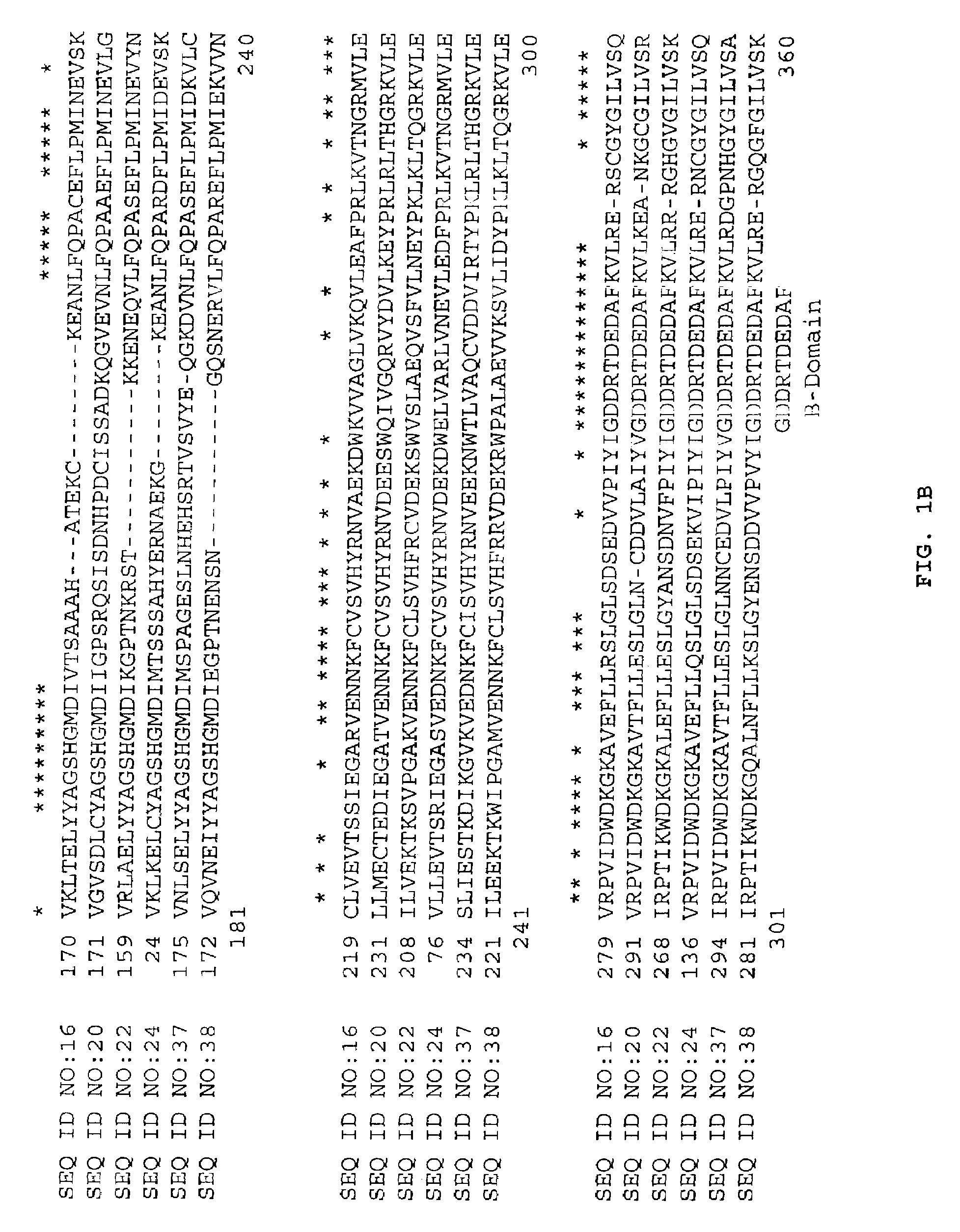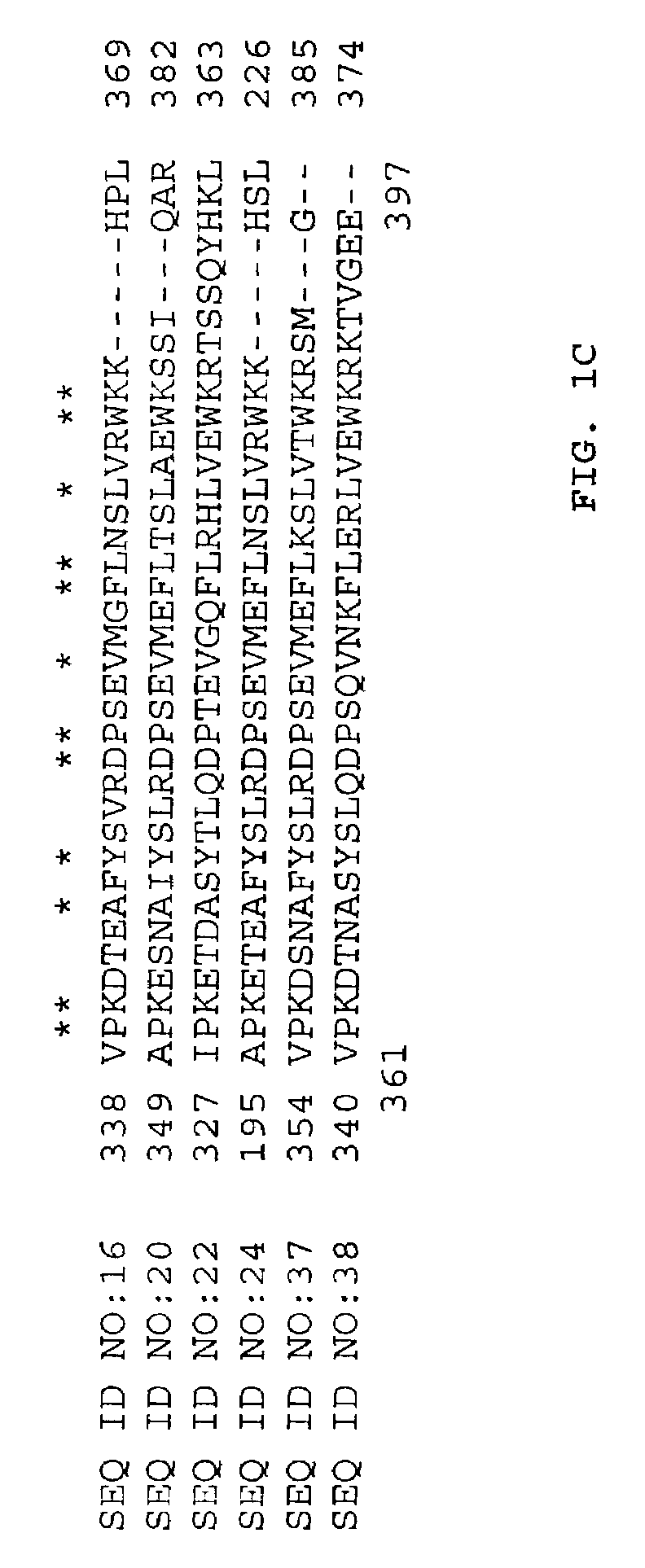Plant genes encoding trehalose metabolism enzymes
a technology of trehalose metabolism and plant genes, applied in the field of plant molecular biology, can solve the problems of evaporative cooling, cellular metabolism, and often impaired water availability for nutrient transport, and achieve the effect of potency
- Summary
- Abstract
- Description
- Claims
- Application Information
AI Technical Summary
Benefits of technology
Problems solved by technology
Method used
Image
Examples
example 1
Composition of cDNA Libraries; Isolation and Sequencing of cDNA Clones
[0079]cDNA libraries representing mRNAs from various corn, rice, soybean and wheat tissues were prepared. The characteristics of the libraries are described below.
[0080]
TABLE 2cDNA Libraries from Corn, Rice, Soybean and WheatLibraryTissueClonecs1Corn leaf, sheath 5 wk plantcs1.pk0105.a2p0006Corn young shootp0006.cbyvv20rp0102Corn early meiosis tassels, 16–18 cm long*p0102.ceraq93rrls2Rice leaf (15 days after gremination) 2 hrs afterrls2.pk0002.f4infection of Magnaporta grisea strain 4360-R-62 (AVR2-YAMO)rls2.pk0004.b4rls72Rice leaf (15 days after germination) 72 hours afterrls72.pk0035.d8infectionof Magnaporta grisea strain 4360-R-67 (avr2-yamo)sdp2cSoybean developing pods 6–7 mmsdp2c.pk008.n16sls2cSoybean infected with Sclerotinia sclerotiorumsls2c.pk002.e16mycelium.srn1cSoybean developing root nodules.srn1c.pk002.g19ssmSoybean shoot meristemssm.pk0021.f9wlk1Wheat seedlings 1 hr after treatment with herbicide**wl...
example 2
Identification of cDNA Clones
[0086]cDNA clones encoding trehalose metabolism enzymes were identified by conducting BLAST (Basic Local Alignment Search Tool; Altschul et al. (1993) J. Mol. Biol. 215:403–410; see also the explanation of the BLAST alogarithm on the world wide web site for the National Center for Biotechnology Information at the National Library of Medicine of the National Institutes of Health) searches for similarity to sequences contained in the BLAST “nr” database (comprising all non-redundant GenBank CDS translations, sequences derived from the 3-dimensional structure Brookhaven Protein Data Bank, the last major release of the SWISS-PROT protein sequence database, EMBL, and DDBJ databases). The cDNA sequences obtained in Example 1 were analyzed for similarity to all publicly available DNA sequences contained in the “nr” database using the BLASTN algorithm provided by the National Center for Biotechnology Information (NCBI). The DNA sequences were translated in all r...
example 3
Characterization of cDNA Clones Encoding Alpha, Alpha-Trehalase
[0088]The BLASTX search using the EST sequences from clones listed in Table 3 revealed similarity of the polypeptides encoded by the cDNAs alpha, alpha-trehalase from Glycine max (NCBI General Identifier No. gi 4559292) and Neurospora crassa (NCBI General Identifier No. gi 3929389). Shown in Table 3 are the BLAST results for individual ESTs (“EST”), the sequences of the entire cDNA inserts comprising the indicated cDNA clones (“FIS”), the sequences of contigs assembled from two or more ESTs (“Contig”), sequences of contigs assembled from an FIS and one or more ESTs (“Contig*”), or sequences encoding an entire protein derived from an FIS, a contig, or an FIS and PCR (“CGS”):
[0089]
TABLE 3BLAST Results for Sequences Encoding PolypeptidesHomologous to Glycine max and Neurospora crassaAlpha, Alpha-TrehalaseCloneStatusBLAST pLog Score tocs1.pk0105.a2FIS133.00 (gi 4559292)sdp2c.pk008.n16FIS 69.70 (gi 3929389)
[0090]The data in T...
PUM
| Property | Measurement | Unit |
|---|---|---|
| Fraction | aaaaa | aaaaa |
| Fraction | aaaaa | aaaaa |
| Fraction | aaaaa | aaaaa |
Abstract
Description
Claims
Application Information
 Login to View More
Login to View More - R&D
- Intellectual Property
- Life Sciences
- Materials
- Tech Scout
- Unparalleled Data Quality
- Higher Quality Content
- 60% Fewer Hallucinations
Browse by: Latest US Patents, China's latest patents, Technical Efficacy Thesaurus, Application Domain, Technology Topic, Popular Technical Reports.
© 2025 PatSnap. All rights reserved.Legal|Privacy policy|Modern Slavery Act Transparency Statement|Sitemap|About US| Contact US: help@patsnap.com



